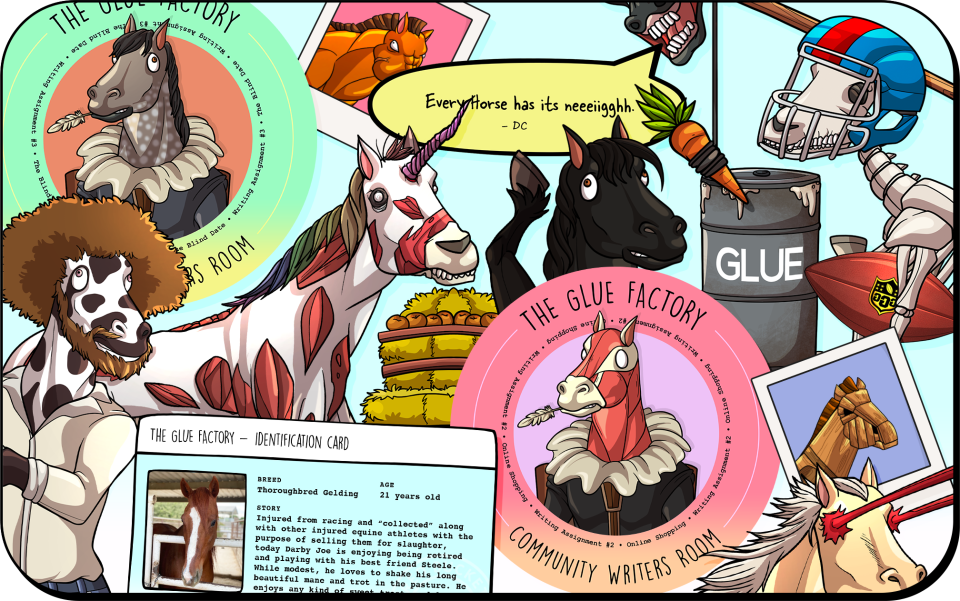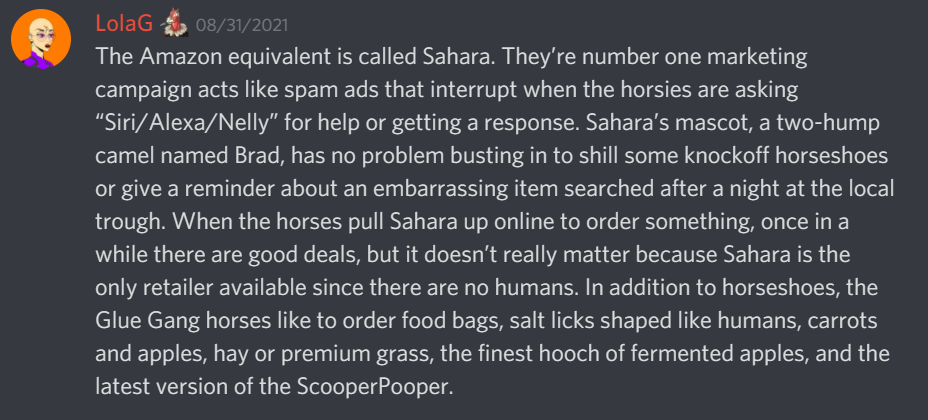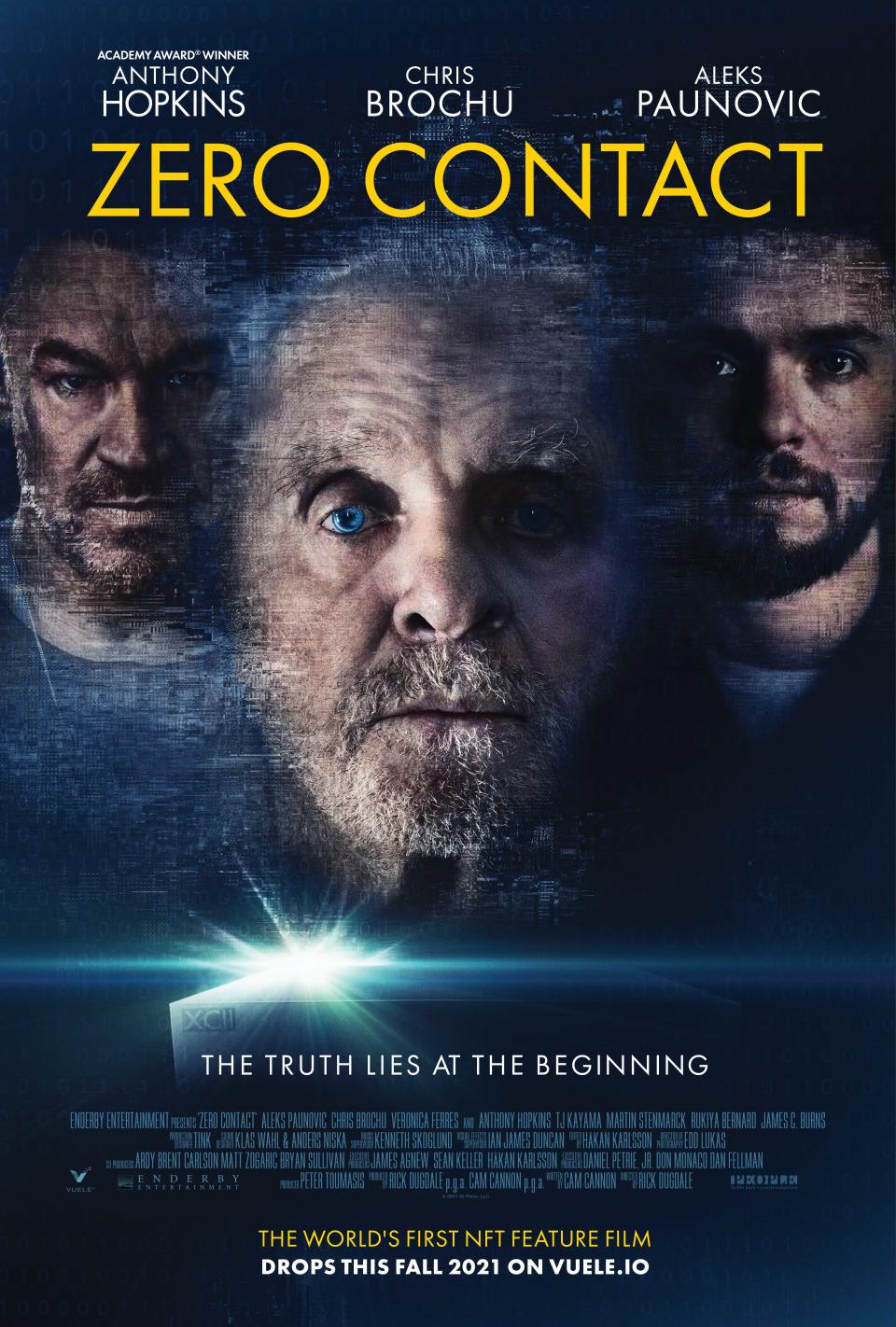If Snoop Dogg, Reese Witherspoon, and McDonald’s Can Do NFTs, So Will You

- Oops!Something went wrong.Please try again later.
- Oops!Something went wrong.Please try again later.
- Oops!Something went wrong.Please try again later.
When a Christie’s auction sold a NFT of Beeple’s work “Everydays: The First 5000 Days” for $69 million in March 2021, it seemed like a trip to outer space or a cryotherapy home spa: the latest absurdist fad of the super wealthy. A year later, everyone loves NFTs: Snoop Dogg is planning to turn Death Row Records into “an NFT label.” McDonald’s wants to use NFTs in virtual restaurants that deliver real food.
Even Hollywood, usually behind the curve on consumer technology, is starting to catch up: Last week, Disney promoted an executive to lead “Next Generation Storytelling and Consumer Experiences,” while Reese Witherspoon’s Hello Sunshine signed a partnership with NFT collective World of Women to turn its characters into movies and TV shows.
More from IndieWire
Tarantino's Attorney Blasts Miramax Over 'Pulp Fiction' NFT Lawsuit: The Studio 'Is Wrong'
Quentin Tarantino Is Putting 7 Uncut, Never-Before-Seen 'Pulp Fiction' Scenes Up for Auction
The non-fungible token has started to reveal its utility. In the entertainment world, NFTs give creators new ways to interact with their audiences, raise money, create new distribution windows, and turn all of it into a proof of concept to sell their movies and TV shows. That said, plenty of smart people still don’t know what they are.
Rick Dugdale, director and producer of the Anthony Hopkins-starring NFT feature “Zero Contact,” said many industry contracts currently freeze NFT rights in a knee-jerk reaction that lacks comprehension. “You don’t freeze it, you exploit it,” he said.
To explain that, we turned to digital artist Kevin McCoy, who created the first NFT back in 2014: He minted a token on the Namecoin blockchain that pointed to an animation and called it “monetized graphics.” The name didn’t stick, but it addressed a need McCoy wanted to address in the digital art world. Digital works were — and still are — posted, downloaded, and reposted in a way that often cuts out the artist.
“A somewhat more narrow version of the NFT is the idea that broke into the mainstream,” said McCoy. “That’s this kind of digital art, even though the idea itself is broader than that. I think there’s a good reason that’s the case, because — it’s so weird to use this term — it’s tangible, right? ‘Here’s this artwork that I can own through this special way.'”
Thrilled to be partnering wjth @worldofwomennft and @YKarkai to extend this incredible platform into storytelling! ☀️ @hellosunshine https://t.co/1m5knd8dUt
— Reese Witherspoon (@ReeseW) February 17, 2022
That’s what lies at the heart of Hello Sunshine’s pact with World of Women, a collective of female artists who create NFT artworks. The first collection of 10,000, released last summer, sold out overnight; the next one launches sometime this year. To Dugdale’s point, Hello Sunshine plans to exploit the World of Women character universe into feature films and TV series.
However, an NFT is more than digital artwork. Just as uploading “Me At the Zoo” on YouTube in 2006 led to a video-driven internet, NFT true believers see them as the tool that will create the next iteration of the web: an online ecosystem where tokens represent physical and digital things. (Naturally, “Me At the Zoo” is now available as an NFT.)
“We live in a world with complex models of ownership, and eventually all those things will become tokenized in one form or another,” said, McCoy, “just in the same way that we’ve seen them all become digitized in the last 30 or 40 years.”
It’s the transition from web 2.0 to web3. “The NFT is the gateway to web3,” said Ben Arnon, co-founder and co-CEO of NFT platform Curio. “It puts ownership in the hands of users. In the past, monetization was completely in the hands of the platforms like Facebook and Google. It’s the future of the internet, so people should get on board.”
There’s also NFT projects that lean into community and give token holders a much more active role. At Sundance’s New Frontier this year, McCoy and his wife Jennifer McCoy exhibited “The Inside World,” an experiential mystery-thriller game. It features images created by Peter Rostovsky and a story written by Annie J. Howell that unfolds over a Discord server, the private chat platform favored by the crypto community. Participants can collect NFTs that depict the project’s characters, which gives them a stake in how the storyline progresses.
“We’re thinking about the whole ecosystem as a way to fuse what people love about fan fiction and media,” Jennifer McCoy said. “Instead of waiting to see the fan reaction you’re working with it from the get-go, which is a fun way to develop the world and to do the story building, which usually happens behind the scenes.”

Centaur Studios
In Hollywood, film and TV creators are also using NFTs to raise money and build a fanbase before their projects even start. This spring, six-episode animated webseries “The Glue Factory” will premiere with a voice cast that includes Ted Danson, Patton Oswalt, Bobby Moynihan, and Bobby Lee. A comedy about the lives of once-mistreated horses that now live in a world where they make the rules, it was created with the input — and over $3 million in funding — from token holders. Centaur Studios minted 10,000 NFTs last August, which sold out. Each cost about $300 in Ethereum. Of the proceeds, $315,000 was donated to Red Bucket, a Southern California equine rescue organization.
Through a Discord server, token holders participated in various writing assignments: What would the name of the iPhone be in the show’s anthropomorphic equine world? Which posters should hang in the windows of the horses’ doctor’s office? The staff writers, led by showrunner Jon Barinholtz (“American Auto”), reviewed the ideas in a video chat, riffing and building on the submissions in front of a video-chat audience of token-holders.
“I think for a lot of people, at least in the entertainment world and specifically the comedy entertainment world, NFT is almost like a dirty word right now — people don’t know what to do with it, so it’s easy to criticize it,” Barinholtz said. “Sometimes they’re not wrong — there’s a lot of projects that can be all smoke and mirrors and it’s unclear what their utility is.”
Part of the pitch for “The Glue Factory” is the engagement of the NFT holders who are literally vested in the project. They serve as proof of concept of the IP’s built-in community, which could encourage a network or streamer to pick up the show.
If it does well, those initial tokens could be sold at a premium to others eager to be a part of the community. The earliest iteration of an NFT project is like a first-edition cult comic book that goes on to fuel TV show and blockbuster adaptations. The initial fanbase remains as the popularity increases, but early adopters on NFT projects could be compensated in much richer ways than bragging rights.
“In the future, we’re really thinking that the NFT landscape will also be a breeding ground for the IP that ultimately makes its way into film, TV, and publishing,” Arnon said.

Centaur Studios
NFTs and cryptocurrency are often accused of being a bubble waiting to burst; India’s central bank just labeled it a Ponzi scheme. Then there’s the technology’s environmental footprint. Mining NFTs and validating them on the blockchain’s decentralized public ledger is an energy-intensive process. A year’s activity on the Ethereum network is estimated to use as much electricity as Denmark or Libya in the same period.
“One of the key challenges is that there is no really accurate calculator of what the carbon footprint is because of how distributed Ethereum is,” said Sam Korotkov of Centaur Studios. “No one can say where the computer that was processing the transaction came from, so they can’t say whether it was using coal or green power.”
To ameliorate that impact, the Australia-based Korotkov said the team purchased 150 metric tons of carbon offsets from Greenfleet, which cost AUD$2,250. The show’s initial impact was calculated using a carbon calculator to come up with that number, and Korotkov says his goal is to eventually have his projects become carbon negative through a range of partnerships.

Lionsgate
For “Zero Contact,” Dugdale sold 11 initial NFTs for a range of prices that amounted to total proceeds of $93,435. He’s also launching NFT platform Vuele, which will sell additional tokens that offer first-look access through a dedicated NFT window — in this case, before a theatrical release from Lionsgate’s Grindstone Entertainment. Two sequels are already in production.
“It was critical for us to say we’re doing [sequels] two and three, because you immediately declare to the NFT community, ‘It’s a franchise, it’s collectible, there’s Easter eggs,'” Dugdale said. “Imagine if ‘Lord of the Rings’ was an NFT 20 years ago.”
Like Centaur Studios and “The Glue Factory,” Dugdale believes NFT buyers represent not only a chance to bolster his film’s finances, but also a unique opportunity to create buzz before it hits theaters.
“Full props to Lionsgate [and Grindstone CEO] Barry Brooker for getting behind this,” he said. “They looked at this and there was a real analysis: ‘Does it affect my downstream sales if I pick up an NFT title?’ They looked at it as not only would it not hurt their downstream, but it could increase it in value. The NFT created market exposure, so potentially it could be part of their P&A strategy.”
For now, “Zero Contact” revenue from NFT sales goes through the blockchain to Vuele, which cashes out the cryptocurrency to pay the film’s producers. In the future, Dugdale and others believe that blockchain could power “smart contracts” — programs that handle everything from licensing deals to talent compensation. Those contracts are stored on a blockchain that automates the execution of an agreement when certain conditions are met.
“You can build a future where we will all live in a smart contract, and all accounting and distribution proceeds will be inside a smart contract,” he said. “That’s not today. NFT revenue today is just like TV licenses, a VOD play, or home video.”
Best of IndieWire
Quentin Tarantino's Last Movie: 18 Unmade Projects That Could Be His Final Film
From 'Nymphomaniac' to 'Shortbus,' a History of Unsimulated Sex Scenes in 32 Films
New Movies: Release Calendar for February 18, Plus Where to Watch the Latest Films
Sign up for Indiewire's Newsletter. For the latest news, follow us on Facebook, Twitter, and Instagram.

